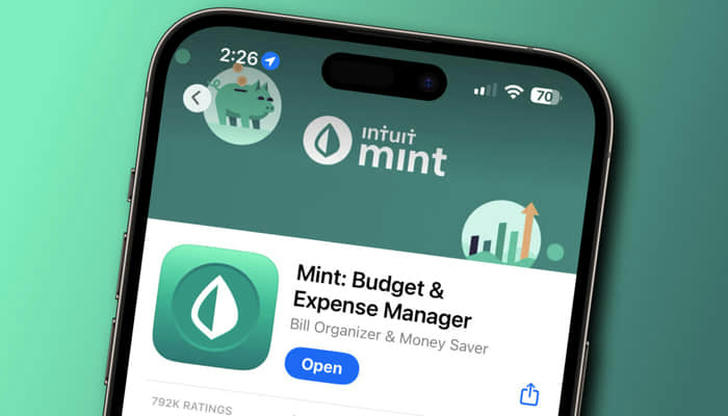Cutting Costs, Saving More: Practical Family Budgeting Tips for 2024

Managing a family budget can often feel like a never-ending balancing act. You’re juggling grocery bills, school fees, utilities, and, of course, that “emergency” fund that never seems to quite cover emergencies. But don’t worry, you’re not alone! With a few smart strategies, you can cut costs and start saving more—without sacrificing the things you love.
In this article, we’ll take a look at practical and achievable family budgeting tips for 2024. With real-life examples and a few laughs along the way, we’ll help you navigate the world of budgeting while keeping your sanity intact!
1. Track Every Penny – Yes, Really
First things first: to cut costs, you have to know where your money is going. Tracking your expenses might sound like a tedious task, but it’s the foundation of any successful budget.
Start by recording every purchase, no matter how small—$5 for that coffee, $2.50 for the bag of chips at the gas station, or the subscription to yet another streaming service you forgot you had. This will help you spot any recurring expenses you can eliminate or cut down.
Real-Life Example:
Meet the Thompsons. With two kids, a dog, and a never-ending list of activities, they didn’t think they could possibly save money. But after tracking their spending for a month, they were shocked to discover they were spending $40 a month on a gym membership they hadn’t used in six months! By canceling that, they saved $480 a year.
Solution:
Use budgeting apps like Mint or YNAB (You Need A Budget) that automatically categorize your spending. Alternatively, you can go old-school with a pen and paper. Just make sure to track EVERYTHING—yes, even those impulse buys.

2. Cut Back on Subscriptions – Seriously, How Many Do You Need?
It’s easy to sign up for every new service that promises to save you time, provide entertainment, or improve your life. But before you know it, you're paying for five streaming platforms, a meal kit delivery service, and a fitness app that no one in the family is using. These charges add up quickly.
Real-Life Example:
Sarah and John loved their family movie nights, so they signed up for Netflix, Hulu, Disney+, and a few others. But after taking a hard look at their budget, they realized they were spending nearly $100 a month on subscriptions. After cutting down to just two, they saved $600 annually.
Solution:
Take a look at your subscriptions and cancel the ones you don’t need or use. Use apps like Truebill to help identify and manage subscriptions that might be draining your wallet without providing much value.
3. Grocery Shopping Like a Pro
Grocery bills are one of the biggest expenses for most families, but with a little planning, you can save big. Start by creating a meal plan and shopping with a list. This helps you avoid impulse buys, reduce food waste, and maximize your spending.
Real-Life Example:
The Martins used to head to the grocery store without a plan, picking up whatever looked good at the moment. After realizing they were spending over $500 a month on food, they began meal planning, shopping only once a week, and buying in bulk for non-perishables. This brought their monthly grocery costs down to $350.
Solution:
Buy in bulk for staple items like rice, pasta, canned goods, and snacks. Shop the sales and use coupons to get the best deals. Online grocery shopping can also help you stick to your list and avoid those impulse buys.

4. Embrace DIY Projects (Within Reason)
One of the best ways to save money is by doing things yourself. This could be as simple as fixing a leaky faucet, painting your kitchen, or even making your own cleaning supplies. DIY projects can save you a ton of cash, and they’re often fun for the whole family to get involved in.
Real-Life Example:
The Parkers were looking to spruce up their living room but couldn’t afford new furniture. Instead of splurging on a new couch, they watched a few YouTube tutorials, bought some fabric, and reupholstered their old sofa. The total cost? Just $100. The result? A “new” couch, and they saved hundreds.
Solution:
DIY projects don’t have to be complicated or expensive. Start with small things, like painting walls, making homemade cleaners, or even baking your own bread. These little efforts can add up to big savings over time.
5. Use Energy Wisely (It’s About More Than Turning Off the Lights)
Cutting down on your energy usage is another way to save money. While turning off the lights when you leave a room is important, there are also other ways to reduce your utility bills. Consider energy-efficient appliances, weatherproofing your home, and using smart thermostats to control heating and cooling costs.
Real-Life Example:
The Johnson family was shocked when they saw their monthly electricity bill—$200 for a family of four! After investing in energy-efficient LED bulbs, upgrading their HVAC system, and using a programmable thermostat, their bills dropped to $120 per month.
Solution:
Invest in energy-saving appliances or retrofit your home with more efficient insulation, windows, and weatherstripping. A little upfront cost can lead to significant savings over the years.

6. Create a “Fun Fund” for Family Activities
Entertainment is another area where families often overspend. It’s easy to blow the budget on eating out, attending events, or spontaneous trips. However, with a little planning, you can enjoy quality family time without breaking the bank.
Real-Life Example:
The Browns used to go out to dinner three times a week, not realizing how much it added up. They switched to cooking at home most nights and put the money they saved into a “fun fund” for family activities, like hiking or a monthly visit to a museum. They ended up saving $1,000 a year while still having fun as a family.
Solution:
Set a monthly “fun fund” limit and stick to it. Whether it’s for dining out, movies, or local events, budgeting for family fun will help you enjoy your time together without guilt or overspending.
7. Pay Down Debt Strategically
If you’re carrying debt, it’s important to prioritize paying it down. Start with high-interest debts like credit cards, and once they’re cleared, focus on student loans, mortgages, or auto loans. The less you pay in interest, the more you can save.
Real-Life Example:
The Andersons were struggling with credit card debt, which was costing them $200 a month in interest. After focusing on paying it off with a snowball strategy (paying off the smallest debts first), they cleared their credit cards in less than a year, saving them money in the long run.
Solution:
Consider consolidating your debt or refinancing loans to lower interest rates. Look for ways to pay off the highest-interest debts first, and gradually eliminate them.

8. Start Saving for the Future (It’s Never Too Late)
Even though saving for the future is essential, many families put it off. But the earlier you start, the better. Whether it’s for retirement, your child’s education, or an emergency fund, putting aside a little every month adds up over time.
Real-Life Example:
The Martins started contributing to their 401(k)s in their 30s and set up a college savings plan for their kids. With automatic contributions, they didn’t even notice the deductions, but by the time they were in their 40s, they had built a solid savings buffer.
Solution:
Set up automatic transfers to your savings or retirement accounts, even if it’s just a small amount. Over time, these contributions will grow and help you reach your financial goals.
Conclusion
Cutting costs and saving more isn’t about living frugally or depriving yourself of life’s little luxuries. It’s about making intentional decisions that align with your financial goals. By tracking your spending, reducing unnecessary expenses, and taking small steps to save on energy and other costs, you can set your family up for financial success in 2024 and beyond.
So, whether it’s canceling those unused subscriptions, mastering the art of grocery shopping, or embracing DIY projects, every little change counts. Start today, and soon you’ll find that cutting costs doesn’t have to be hard—it can actually be fun. Happy budgeting!
